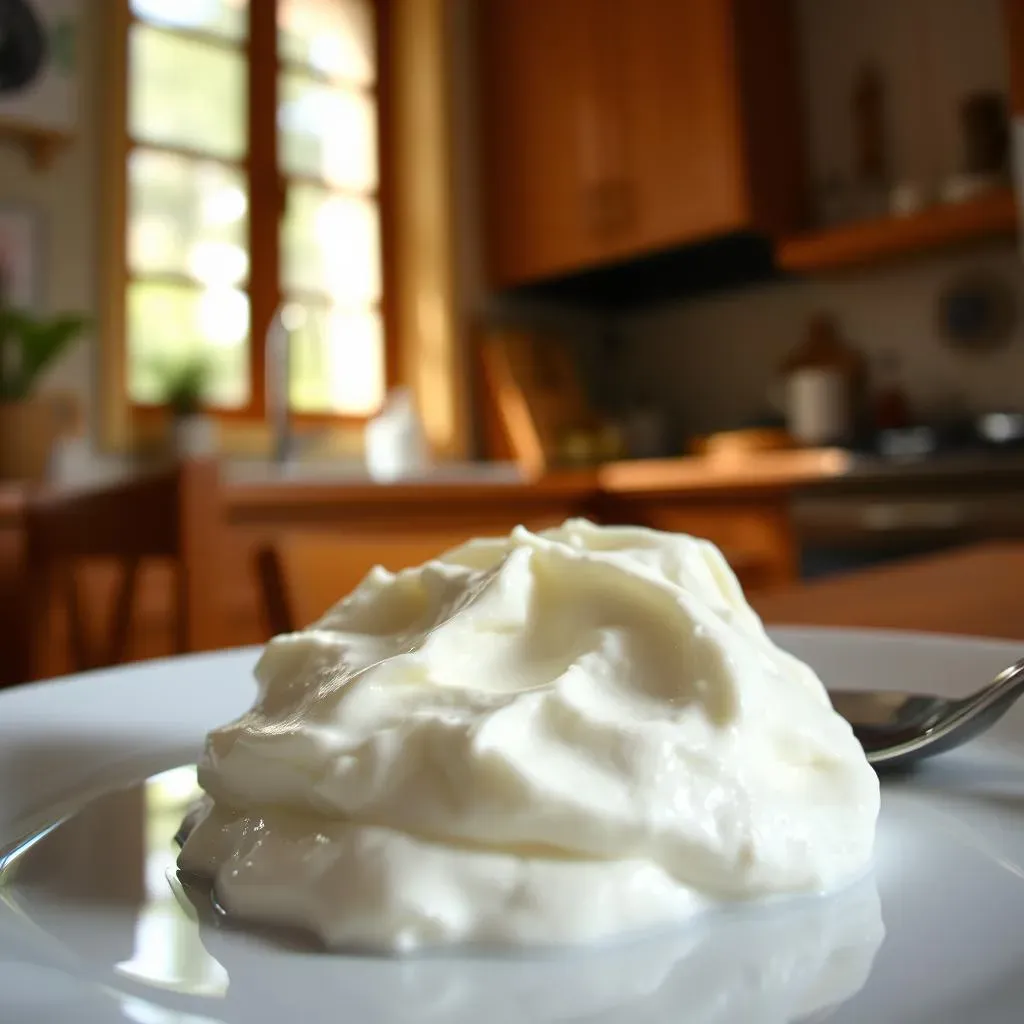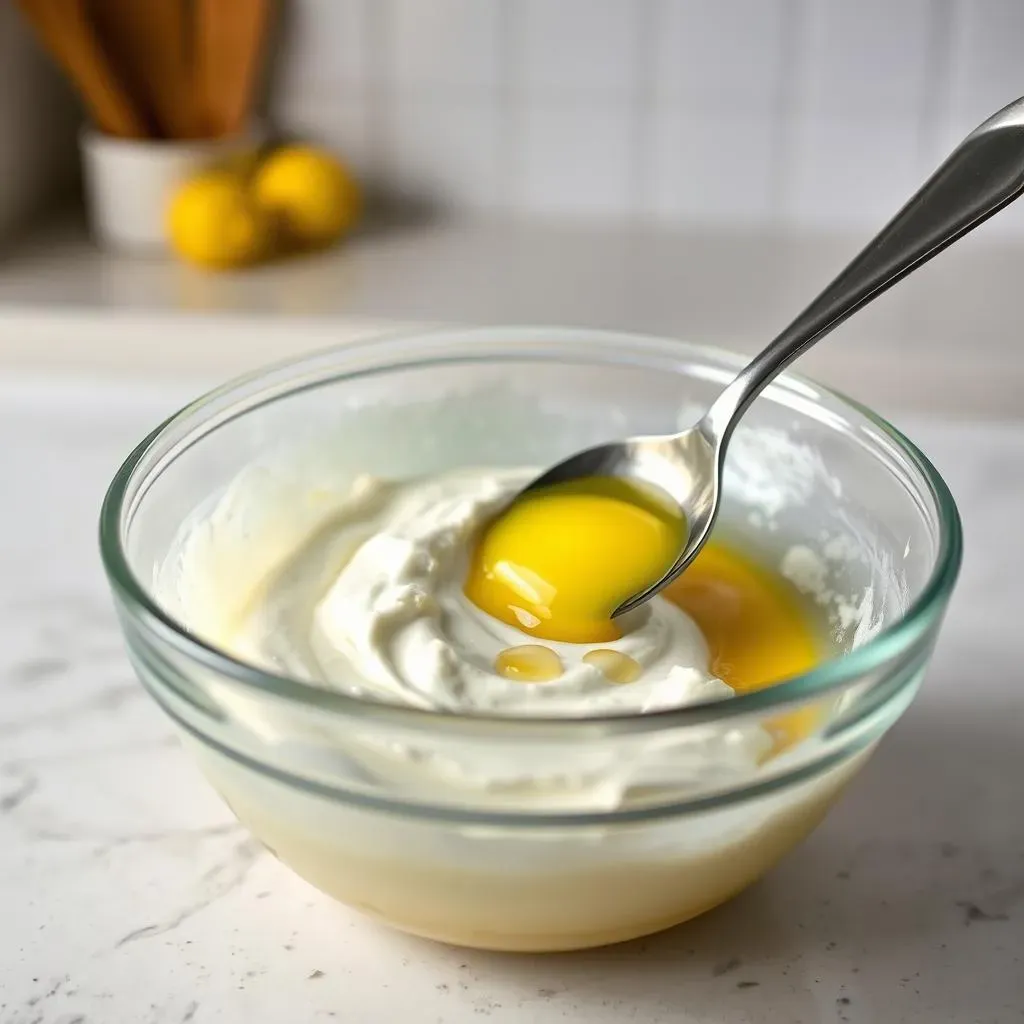Table of Contents
Ever find yourself mid-recipe, staring into the fridge, only to realize you're out of sour cream? It's a kitchen crisis we've all faced! But what if I told you there's a readily available, healthier, and equally delicious alternative lurking in your dairy drawer? Yep, we're talking about the mighty greek yogurt sour cream substitute. This isn't just some desperate swap; it's a game-changer. We'll explore why Greek yogurt is such a fantastic stand-in, how to use it perfectly in all your favorite recipes, and some sneaky tricks to make it even better than the real thing. So, whether you’re looking to cut calories, boost protein, or simply ran out of sour cream, this guide will show you how to master the art of the greek yogurt sour cream substitute. Get ready to ditch the dairy aisle drama and embrace the creamy, tangy goodness.
Why Greek Yogurt Works as a Sour Cream Substitute

Why Greek Yogurt Works as a Sour Cream Substitute
The Texture Tango
Okay, so first things first, let's talk texture. Sour cream is known for its thick, rich consistency, right? Well, guess what? Greek yogurt, especially the full-fat kind, is a total texture twin. It's that lovely thickness that makes it such a great substitute. It’s not watery or runny; it holds its shape, which is super important when you're trying to dollop it on a taco or stir it into a creamy sauce. This is where regular yogurt often falls short, but Greek yogurt? It's ready for the challenge.
I remember once I tried using regular yogurt in a dip, and it was a soupy mess. Lesson learned. Greek yogurt's thickness is a game-changer.
The Tang Factor
Next up, the tang! Sour cream has that distinct, slightly sour flavor that gives dishes a little zip. Greek yogurt also has a tangy kick, thanks to the fermentation process. It's not exactly the same as sour cream, but it's close enough that most people won't notice the difference, especially when it's mixed with other ingredients. This tanginess is key; it's what makes a dollop of sour cream or Greek yogurt so satisfying. It cuts through richness and adds a layer of complexity to your food.
It's like a secret weapon in the kitchen. I often use it in my homemade dressings to get that perfect zing.
Property | Sour Cream | Greek Yogurt |
|---|---|---|
Texture | Thick, rich | Thick, creamy |
Tanginess | Distinctly sour | Slightly tangy |
Fat Content | High | Variable (can be full-fat, low-fat, or non-fat) |
The Nutritional Nudge
Here's where Greek yogurt really shines. While sour cream is pretty high in fat, Greek yogurt is packed with protein, and you can choose different fat levels to suit your needs. This means you can get a similar taste and texture while also adding a nutritional boost to your meals. It’s a win-win! You're not just substituting; you're upgrading. I mean, who doesn't want a little extra protein in their life? It's like getting a bonus for making a simple swap.
Plus, the fact that you can choose from full-fat, low-fat, or non-fat means you have control over your calorie and fat intake, which is a great thing.
How to Use Greek Yogurt as a Sour Cream Substitute in Recipes

How to Use Greek Yogurt as a Sour Cream Substitute in Recipes
The 1:1 Swap
Alright, let's get practical. The easiest thing about using greek yogurt as a sour cream substitute is the ratio: it's generally a 1:1 swap. This means if your recipe calls for one cup of sour cream, you just use one cup of Greek yogurt. No complicated math, no weird conversions. It's as simple as it gets, which is a huge win in my book. This one-to-one swap works wonders in most recipes, from dips and dressings to baked goods and toppings. I mean, who doesn't love an easy substitution?
I remember the first time I tried it, I was so relieved at how effortless it was. No fuss, just a straight swap and boom, you're good to go.
Adjusting for Baking
Now, baking is a bit of a different beast. While the 1:1 swap usually works fine, there are a couple of things to keep in mind. If you're using non-fat Greek yogurt, it might not have the same richness as full-fat sour cream, so your baked goods could end up a bit drier. To combat this, you can add a tablespoon or two of melted butter or oil to the batter. This helps to bring back some of that moisture and richness. Also, avoid using Greek yogurt that has added thickeners, as these can mess with the final texture of your baked goods.
I once made a cake using low-fat Greek yogurt and forgot the extra fat. Let's just say it was a bit of a crumbly disaster. So don't skip that step!
Recipe Type | Greek Yogurt Type | Notes |
|---|---|---|
Dips & Dressings | Any fat level | 1:1 swap works perfectly |
Baking | Full-fat or add fat | Add 1-2 tbsp melted butter or oil to batter if using low-fat |
Toppings | Any fat level | Use directly as 1:1 swap |
Cold vs. Hot Recipes
Another thing to think about is whether you're using the Greek yogurt in a cold or hot recipe. In cold dishes like dips, dressings, and toppings, you can use any type of Greek yogurt without issues. However, when adding it to hot dishes, like sauces or soups, it's best to add it at the end of the cooking process and over low heat. This prevents the yogurt from curdling or separating. Nobody wants a grainy sauce, right? Also, if the recipe calls for cooking the sour cream, you can add a tablespoon of flour to the Greek yogurt to help stabilize it.
I learned this the hard way when I tried to add Greek yogurt to a boiling soup. It looked like a science experiment gone wrong. Now I always add it right at the end, and it comes out perfect.
Tips and Tricks for the Best Greek Yogurt Sour Cream Substitute

Tips and Tricks for the Best Greek Yogurt Sour Cream Substitute
Straining for Extra Thickness
Alright, let's get into some pro-level tips. One of the best ways to make your Greek yogurt even more like sour cream is to strain it. This is super easy. Just line a fine-mesh sieve with cheesecloth or a coffee filter, put the yogurt in, and let it sit in the fridge for a few hours. The whey will drain out, and you'll be left with an even thicker, richer product. It's like giving your yogurt a spa day, and the results are seriously worth it. This extra step really elevates the texture, making it almost indistinguishable from full-fat sour cream.
I usually do this overnight before I need it, and it’s always a game-changer. The texture goes from thick to ridiculously thick, which is perfect for dips and toppings.
Boosting the Tang
Okay, so Greek yogurt has a tang, but sometimes you need that extra sour kick to mimic sour cream perfectly. The solution? A little bit of lemon juice or vinegar. Just a teaspoon or two will do the trick. Start small and add more to taste. This little boost of acidity really makes the Greek yogurt taste closer to sour cream, especially when it's mixed into other ingredients. It’s a simple trick, but it makes a world of difference. It's like adding a secret ingredient that everyone will wonder about.
I remember one time I added a little bit too much vinegar and the result was super sour, so be careful, start small and taste as you go!
Tip | How to | Why it Works |
|---|---|---|
Strain Yogurt | Line a sieve with cheesecloth, add yogurt, and refrigerate for a few hours | Removes whey, resulting in a thicker texture |
Add Acidity | Mix in a teaspoon or two of lemon juice or vinegar | Enhances the tangy flavor, mimicking sour cream |
Use Full-Fat | Choose full-fat Greek yogurt for richer taste | Adds more fat for a more authentic sour cream flavor |
Flavor Enhancements
Sometimes, you want to go the extra mile and make your Greek yogurt substitute even more flavorful. You can add a pinch of salt, some garlic powder, or even a bit of onion powder to create a more savory profile. This is especially great for dips and sauces. Experiment with different spices and herbs to tailor the flavor to your specific recipe. It’s like giving your Greek yogurt a personality makeover; it transforms it from a simple substitute into a culinary star.
I've found that a little bit of dill or chives works wonders in dips, and a touch of smoked paprika gives a nice depth to sauces.
The Temperature Trick
Lastly, consider the temperature of your Greek yogurt when using it as a substitute. If you’re adding it to a cold dish, make sure it’s also cold. This will help it blend better and maintain its creamy texture. If you’re adding it to a hot dish, remember to temper it by adding a little bit of the hot liquid to the yogurt before adding it to the pot. This helps prevent curdling. It's like giving your yogurt a gentle introduction to its new environment, ensuring it stays smooth and delicious. This small step makes a big difference in the final result.
I always let my Greek yogurt sit out for a few minutes if I'm adding it to a warm dish, then mix a bit of the warm liquid into it before adding it to the pot.
- Add spices to match the recipe
- Temper before mixing into hot dishes
- Chill yogurt before adding to a cold dish